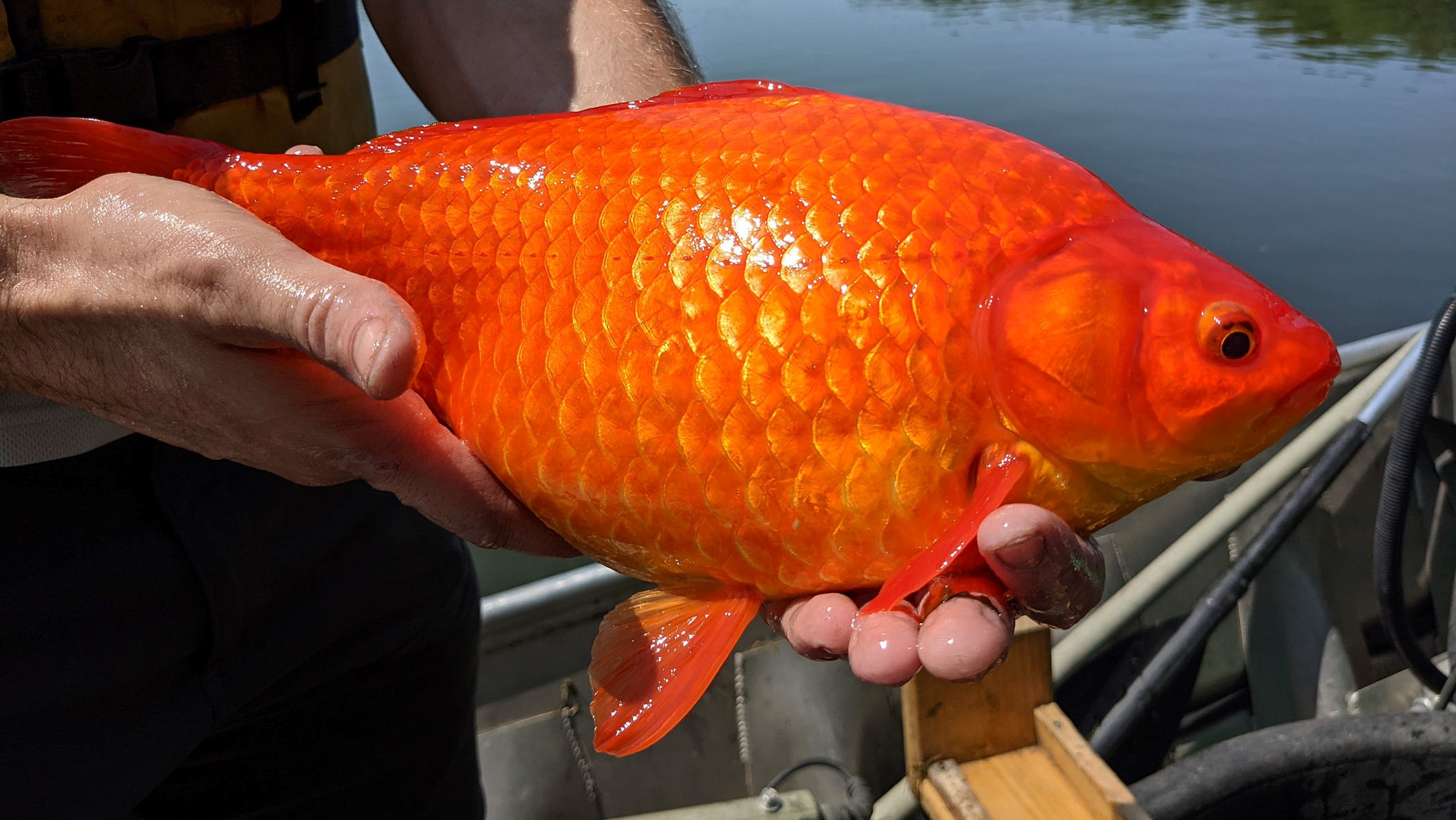Football-size goldfish are taking over US lakes
The former pets are causing serious environmental havoc.

Football-size goldfish are taking over a Minnesota lake after being dumped by their owners.
Officials at Burnsville, a city roughly 15 miles (24 kilometers) south of Minneapolis, issued a warning urging residents to stop releasing their pet fish after recovering multiple foot-long aquatic invaders from the waters of the city's Lake Keller.
"Please don't release your pet goldfish into ponds and lakes!" city officials said in a statement on Twitter. "They grow bigger than you think and contribute to poor water quality by mucking up the bottom sediments and uprooting plants."
Released goldfish are known to grow to several times their domesticated size and have been wreaking havoc on the ecological webs that native species depend upon to survive.
Related: In photos: Thousands of goldfish swarm in Colorado lake
If kept in home aquariums, goldfish (Carassius auratus) usually grow no larger than 2 inches (5.1 centimeters) long, Live Science previously reported. But when released into the wild the teensy fish can balloon to monstrous scales; in 2013 one super-size goldfish captured in Lake Tahoe measured nearly 1.5 feet (46 cm) long and weighed over 4 pounds (2 kilograms), Live Science reported.
And despite their propensity to die while in captivity, the fish are as tough as they come in the wild — capable of living 25 years and surviving for up to five months without any oxygen. (The fish evolved to live in ponds that freeze over in the winter, so their bodies will instead convert carbohydrates into alcohol during this period, which they release through their gills). When these traits are coupled with rapid reproductive rates, goldfish are quickly able to dominate new habitats at the cost of native species.
Get the world’s most fascinating discoveries delivered straight to your inbox.
Officials in Minnesota's nearby Carver County removed about 50,000 goldfish from local waters in November 2020, according to the Washington Post. The county has signed an $88,000 contract with a consulting firm to figure out how to better manage the rogue shoals.
"A few goldfish might seem to some like a harmless addition to the local water body — but they're not," according to a statement from the Minnesota Department of Natural Resources. "Goldfish are in the minnow family and can work their way through city stormwater ponds and into lakes and streams downstream with big impacts, by rapidly reproducing, surviving harsh winters, and feeding in and stirring up the bottom like their close relatives, the common carp."
Minnesota isn't the only part of North America suffering from goldfish invasions. Alberta, Canada is also facing similar problems, and officials near Spokane, Washington, have committed $150,000 to rehabilitating a nearby lake, KHQ news reported.
Originally published on Live Science

Ben Turner is a U.K. based writer and editor at Live Science. He covers physics and astronomy, tech and climate change. He graduated from University College London with a degree in particle physics before training as a journalist. When he's not writing, Ben enjoys reading literature, playing the guitar and embarrassing himself with chess.


